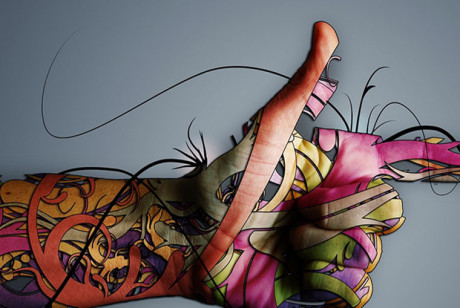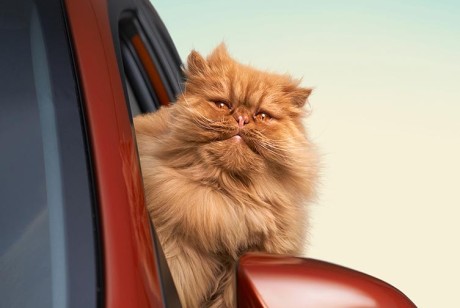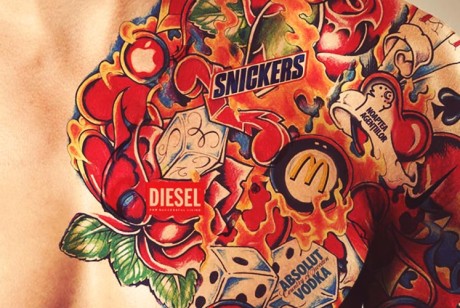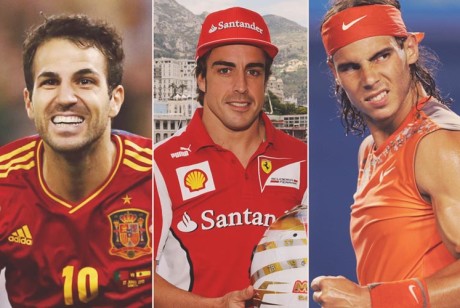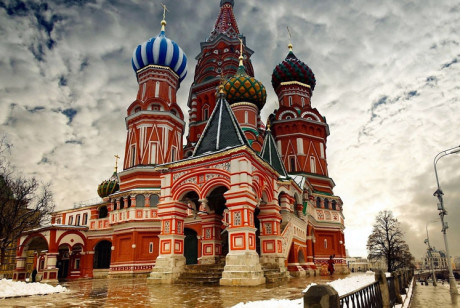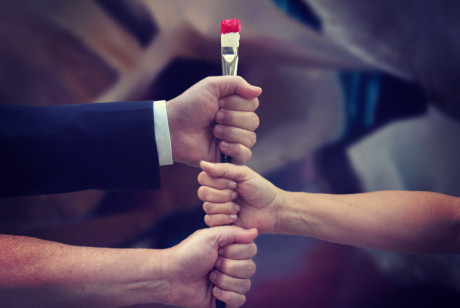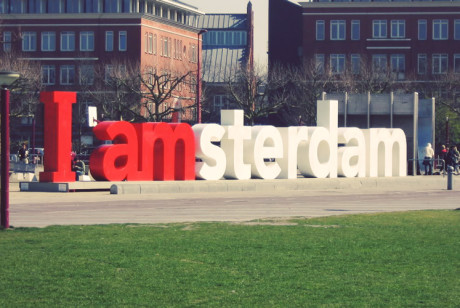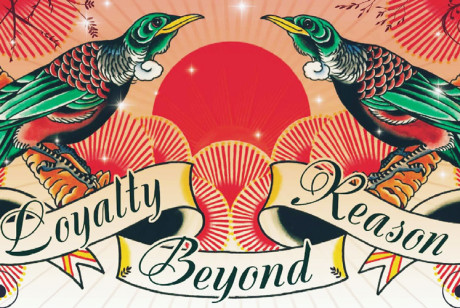Hasta la Vista, Brand!
Friday, 2 May 1997 - Auckland, New Zealand
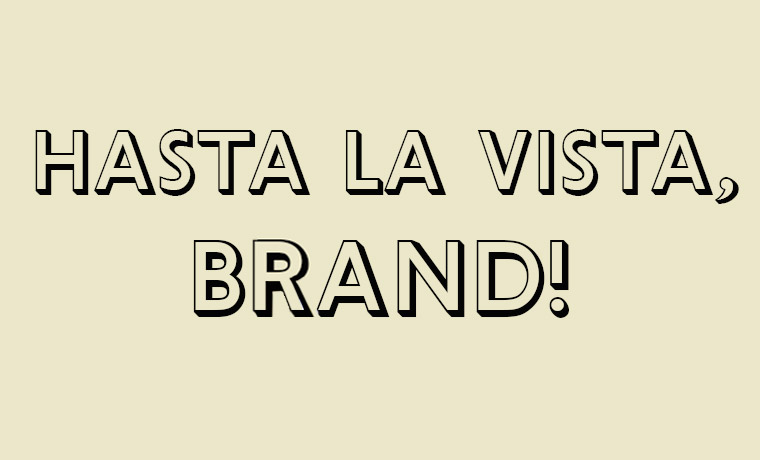
Presentation Summary
An address to the Advertising Agencies Association in Auckland. A brand is the only real asset a company has. In today’s business environment, building a strong brand is the single most compelling imperative facing all companies. A brand is the critical interface between companies and consumers. In most cases, a brand is the only thing which differentiates your company’s products from those of your competitors.
Arnold Schwarzengger has a reputation for being simple and direct about the facts of life. When Arnold was seeding his image out of the niche of Mr Universe competitions, he handed down his definition of branding: “Whatever your product,” says Arnold, “the most important thing is to get everyone to know about it.” And here’s one product everybody knows about.
On the flight back to NY I was reading a Time essay “The Swooshification of the World” by Rick Reilly. “I must get more Swoosh in my life. More, more, more,” says Reilly. “It’s not enough to have the Swoosh on every jersey and scoreboard and dugout roof. I want hockey sticks, nine-irons and yardage markers to be made in the shape of a Swoosh. I want to name my son Swoosh. I want Swoosh to be on the periodic table of the elements, right next to boron.
“I want Swoosh to be the 27th letter of the alphabet. I want to order raw eel at a Swooshi bar. Do not fight it, brothers and sisters, trust in the Swoosh. The Swoosh is good and powerful. Happiness is a warm Swoosh.”
Taken together, Arny and Nike are saying that strong, powerful, famous and compelling brands are the only way to survive in a world full of terminators.
“Dominate or die” says GE’s boss, Jack Welch. Only the top couple of companies in the market can maintain superior long term profitability. One is wonderful, 2 can be terrific, 3 threatened – but 4 is fatal.
For those that do have vision, courage, innovation, inspired teamwork, passionate brand management, and breathtaking advertising, the rewards are substantial.
Peak performing companies, share a passionate commitment to creating and building brand equity, and in doing so they’re driving shareholder value through the roof. Company performance, shareholder value, fabulous advertising and brand equity are irrevocably tied together.
I’ve spent 30 years in brand management and I believe more than ever that the brand, and what we want the brand to stand for in the consumer’s mind – is the foundation of long term company success. The challenge of advertising remains unchanged – to build a brand that consumers trust, and therefore use year after year.
A brand is more than a trademark; it’s a trustmark. However, instead of going down the trustmarketing route we’re taking the easier more seductive route demarketing. Demarketing as in destructive, debasing and debilitating marketing practices leading to the demise of brand loyalty.
First, there’s the sheer pace of hyper-accelerated change that just burns some brands off. Culturally and structurally some companies just aren’t equipped to take the initiative or be responsive to sudden opportunities or challenges, and paralysis overtakes them and their brands.
Then there’s the whole commodity phenomenon. Your products are indistinguishable from rivals, you don’t have any price or quality advantages over competitors, all the key players are doing it superbly and the fastest-growing category of market share is “other” or private label. A familiar theme in many categories in grocery dominated New Zealand.
There is multiplication occurring in all media – in television, cable, newspapers, inserts, magazines, radio, direct, cinema, outdoor, Internet, CD-ROM, chalk on pavements, you name it.
Consumers suffer from information overload, the condition of being bombarded with data but starved of understanding.
We must not let the allure of new media and new technology distract us from the basic challenge of building brand equity. In fact I believe the role of the brand is becoming even more important as these new media evolve. People cannot absorb and retain all these competing messages and the need for meaningful consumer identification with the brand has become more crucial than it’s ever been before.
Consumers are marketing literate and a brand whose marketing is too obviously led is like a person who tries too hard to please, who’ll do anything to win popularity. Consumers have learned to be suspicious of such brands, just as we are suspicious of such people when we meet them in real life.
Here’s another reason why many brands are under threat: consumers want a vastly bigger bang for their buck and are increasingly allocating less and less time to obtain it. Their expectations often rise faster than we are ready.
And here’s a reason you’re all familiar with: retailer brands are now competing with manufacturer brands on both price and quality. I lived through David Nichol, Loblaws and the President’s Choice phenomenon which revolutionised the grocery trade in Canada.
Even the mighty Coke took a rare pasting from President’s Choice Cola. Manufacturers respond with price promotion, coupons, rebates, bonus packs all funded from the advertising/brand equity budget … and, from the product development budget. A vicious spiralling vortex of despair!
And another reason: timid, “play it safe” companies with CEOs who don’t worry about brands, who don’t articulate brand vision or act as brand leaders. Too many CEOs are obsessed with continuous re-engineering, cost cutting and restructuring.
In the hands of managers without imagination, re-engineering becomes mindless downsizing, a meat-axe to cut away not only the fat but also the flesh and bone of the enterprise.
The best way to grow shareholder value is building revenue; the best way to build revenue is to nurture a brand that can generate a premium return because of its inherent brand equity. This CEO is too busy re-engineering to worry about building brands.
He leaves this to his marketing department and brand managers – most of whom have the right to say no – but not the power to say yes. You’ve all had to deal with him right? The Abominable No-man!.
And as a direct result of this we have the spectacle of agencies doing bland, boring, safe work and placing it in media in a bland, boring and safe way.
How many brands, with safe, bland advertising, are slowly dying, unnoticed on the vine, as their equity quietly and gently erodes – not month by month, but year by year as one safe, bland campaign after another is approved through Agencies pragmatically paring back great ideas to ‘safe’ ideas that risk averse marketing departments can buy without their otherwise engaged CEO noticing.
And there’s the death of advertising itself as predicated by the inventors of interactive digital technologies and bright young computer literate brand managers. Currently these media appeal to a relatively small, specialist and segmented audience … and part of the appeal to this audience is that they can block out traditional advertising.
We need to get involved with these media and understand them: the issue is not whether to build brand equity, the delivery is what needs to change.
I hate the Internet. I’m unwired. I’m one of the “digital homeless”, too old to have grown up with computers as part of my every day life, and not so old that I can really forget about the whole shebang and focus on enjoying myself.
I’m threatened by it ‘cause it means I have to change and to learn something new. But I know I’m going to have to love it soon, because it’s too important to remain ignorant about.
We’re on the Internet at home, I’ve got my own Home Page courtesy of Waikato University and yet I still don’t know where the on switch is. My wife uses it to email, my kids use it to download explicit rap lyrics, and I feel good about that, but I know that as burgeoning consumers, our marketing to this next net generation is going to have to be different.
But that’s OK, because I’m remembering that they’re still going to be human. I know it’s not fashionable to talk about it, but the industrial economy will last as long as people get hungry and come back from cyberspace looking for something to eat.
Right at this time when the power and magic of great branding is so important, we’re in danger of losing the plot. Taken together, all the issues I’ve mentioned – the speed of change, media fragmentation, growing retailer power, savvy consumers, gutless CEOs and wimpy agencies – puts tremendous pressure on the poor Marketing director.
He’s being attacked from all sides, by the re-engineering department who always start at the Marketing budget first, by his internal brand group, by his ever-loving, ever-discounting retailing friend, and by highly segmented and sophisticated consumer groups.
So – what can we do to help? First of all brands do matter.
We all know the textbook reasons why brands matter, about why they’re important, and they’re all true. Consumers need strong brands they can trust because they provide information and they give off emotion, energy and attitude. Companies need strong brands because that’s where premium pricing, loyal users and the money is! Retailers (despite some of the negotiation posturing) need strong brands to enhance store image, to attract customers to their stores and to find their own house brands.
The tidal wave of information we swim in offers a compelling reason to focus on the strength of the brand. Strong brands tell their story, give their point of view and state their points of difference. Strong brands give confidence and offer a route through the confusion.
They are a way for consumers to become emotionally involved, for you and them to get in the swim together. Strong brands are a promise, you know what you’re getting, exactly, always. You can count on them. You trust them.
The commodity phenomenon has made this sort of information more important, because when price and even quality are removed as a point of difference, buying into an attitude or experience is a reassuring solution to the consumer’s choice dilemma.
There’s another compelling reason why passionate brand management must be at the top of the CEO agenda. Brand equity is the only real asset that any organisation has. For example, if one asks why a major company like Nestle bought another major company like Rowntree’s. It wasn’t to get hold of Charlie’s Chocolate Factory in York.
Another example. If every one of the 19,000 Macdonald’s restaurants around the world were to burn to the ground overnight, the cost of replacing them would be $17 billion. Yet the market cap of McDonald’s on the New York Stock Exchange is $33 billion. The $16 billion difference is the value of the McDonald’s brand.
I’m not just talking about brand equity in companies, I’m also talking about people and cities. The city of Chicago has assessed the marketing advantage of Michael Jordan to their city to be $4 billion. And they’re not even one of his sponsors!
So, what to do about it, what to do about the brand quagmire that many companies have got stuck in? It’s really got to start with the CEO being the number one brand champion and evangelist. I’m not talking about every CEO growing a goatie and trying to hot air balloon their way across oceans and continents like the virginal Richard Branson, but I am talking about the CEO personally driving brand development.
At Pepsi Roger Enrico ran the Pepsi brand, at P&G John Pepper the CEO is really the brand manager at Tide. At Saatchi & Saatchi my primary role is to be Brand Manager, Saatchi & Saatchi – in other words to nourish the agency’s brand image, values and equity. The CEO must become intimately and constantly involved with building brand equity.
Number two. We must continuously innovate and invest in R&D. We must keep ahead and provide consumers with ever improving functional preference and value. Tide, Procter and Gamble’s single largest brand is a great example of how to build and maintain strong brand equity. Since its introduction in 1946 Tide has been known as the gold standard. “If it’s got to be clean, it’s got to be Tide.”
Tide has been the number one laundry brand in the US for nearly half a century and as the brand enters its second 50 years of life, its market share is the highest it’s been since 1952. Last year Tide Ultra 2 was rolled out. Ultra 2 was the latest of more than 60 performance improvements since the brand was introduced: more than 1 per year.
Now onto one of my favourites, pursue failure. “Risk, risk everything” said Katherine Mansfield. Take the dangerous road, because you are never going to learn from doing stuff right, only by doing it wrong.
What will really kill you is not the failures or the fiascos, but second-guessing. There’s simply no such thing as the “one” decision. Every thing has 100 causes and 120 effects, and few of them have got anything to do with what you planned.
You’ll get a really bad attitude if you’ve got a second-guess mindset, and you’ll end up doing nothing. Follow your instincts, ensure you have deep consumer insight then get on with it.
Ready. Fire! Aim. And then reload and fire again if necessary.
So that’s 3 things clients should do: Make the CEO the champion of brand equity, invest in innovation and instil a bias for action. What about agencies?
I’ve got a job ahead of me to rebuild a brand which has been bruised a little by The infamous Brothers and their desire to be a big one stop shop. As a client I didn’t see the point of a holding company, central agency overhead, (especially between competing cultures) and one stop shopping. I believe ad agencies are there to nurture brand equity, to have ongoing insight into the minds of consumers, to be radical in how to communicate, and, most important, to deliver red hot creative that builds a passionate desire from the consumer to embrace your brand forever!
Clients will forgive you everything if you produce mind-blowing, breathtaking ads that drive the business – and great ads will do that and they’ll do it within 6 months (and they’ll win awards too!). Tom Cruise and Cuba Gooding Jnr were wrong – don’t show me the money – show me a big idea, breathtaking work, a dangerous ad and an impossible solution – then the money will follow.
Agencies should be the stewards of the brand, the fountainhead of imagination, the field of dreams and the crazy haven for clients to escape the relentless, dreary rigours of re-engineering. Just like I’ve done!!
Hasta la Vista. Thank you.
